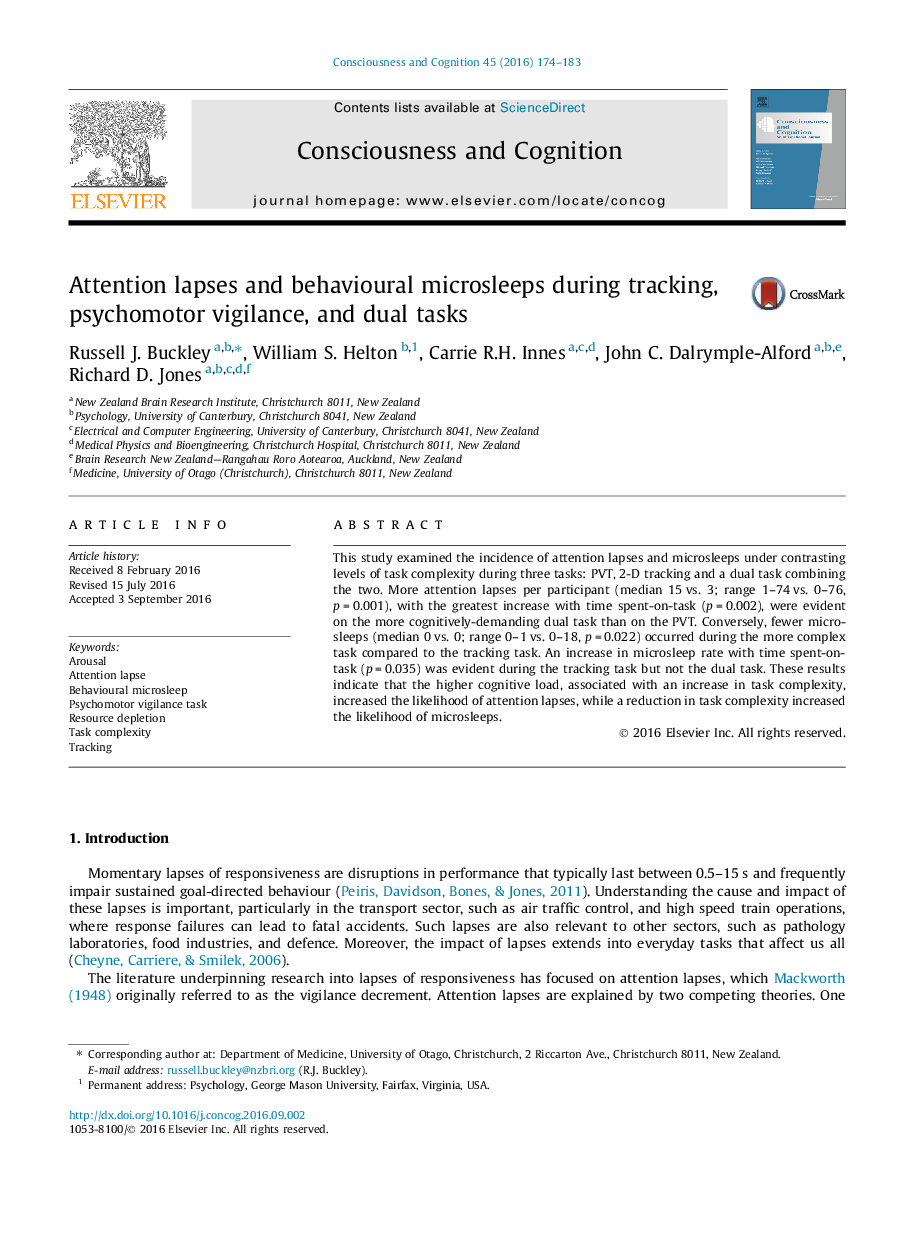| Article ID | Journal | Published Year | Pages | File Type |
|---|---|---|---|---|
| 7288268 | Consciousness and Cognition | 2016 | 10 Pages |
Abstract
This study examined the incidence of attention lapses and microsleeps under contrasting levels of task complexity during three tasks: PVT, 2-D tracking and a dual task combining the two. More attention lapses per participant (median 15 vs. 3; range 1-74 vs. 0-76, p = 0.001), with the greatest increase with time spent-on-task (p = 0.002), were evident on the more cognitively-demanding dual task than on the PVT. Conversely, fewer microsleeps (median 0 vs. 0; range 0-1 vs. 0-18, p = 0.022) occurred during the more complex task compared to the tracking task. An increase in microsleep rate with time spent-on-task (p = 0.035) was evident during the tracking task but not the dual task. These results indicate that the higher cognitive load, associated with an increase in task complexity, increased the likelihood of attention lapses, while a reduction in task complexity increased the likelihood of microsleeps.
Related Topics
Life Sciences
Neuroscience
Cognitive Neuroscience
Authors
Russell J. Buckley, William S. Helton, Carrie R.H. Innes, John C. Dalrymple-Alford, Richard D. Jones,
